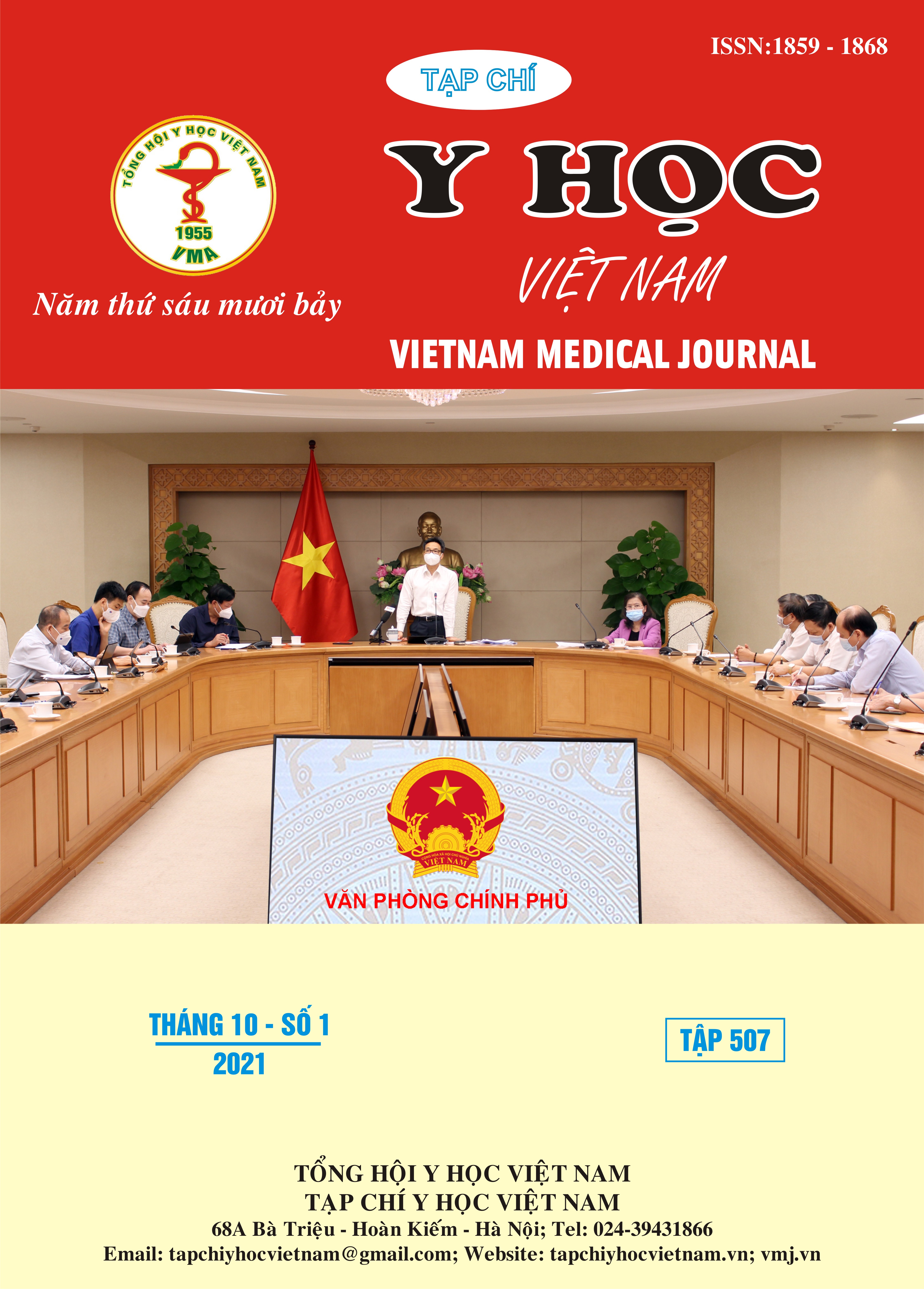INCISOR POSITION AND SOFT TISSUE CHANGES IN CLASS II DIVISION 1 MALOCCLUSIONS WITH FOUR PREMOLARS EXTRACTION BY EVALUATE PRE-TREATMENT AND POST- TREATMENT LATERAL CEPHALOMETRIC RADIOGRAPHY
Main Article Content
Abstract
Objectives: To evaluate the effects of premolars extraction on incisor position and soft tissue profile in patients with Class II, division 1 malocclusion. Materials and method: Descriptive study by evaluate pre- treatment and post- treatment cephalometric radiography of 31 patients (21 females, 10 males) diagnosed with class II division 1 malocclusion with four premolars extraction in School of Odonto- Stomatology and National Hospital Of Odonto- Stomatology to June 2021 were recruited. Results: The average of age was 18,65 (range in 11 to 34). The SNA and SNB angles changed no significantly during treatment. The inclination of upper incisor in relations with cranial base, palatal plane and NA decreased by 10,19 ± 9,070, 9,84 ± 8,600 and 10,13 ± 7,400 respectively. The inclination of lower incisor in relations with mandible plane and NB decreased by 4,53 ± 7,310 and 6,60 ± 5,250 respectively. Interincisal angle increased by 15,94 ± 12,820. We observed a highly significant increase in the distance between the upper and lower lips and the esthetic line and SnPog’ line. No significant differences were apparent in the nasolabial angle, the lips thickness and chin thickness. Conclusions: Between the start and the end of treatment, class II division 1 malocclusions with four premolars extraction experienced more retruded upper and lower incisors. The wider interincisal angle showed a decrease of bimaxillary protrusion. The distance between the upper and lower lips and the esthetic line and SnPog’ line decreased dramatically showed positive effects on the facial profile. No significant differences in the nasolabial angle, lip thickness and chin thickness during treatment.
Article Details
Keywords
incisor, soft tissue, class II division 1 malocclusion, cephalometric, premolar, extract
References
2. Bishara SE. Mandibular changes in persons with untreated and treated Class II division 1 malocclusion. Am J Orthod Dentofacial Orthop. 1998;113(6):661-673. doi:10.1016/s0889-5406(98)70227-6
3. Hayashida H, Ioi H, Nakata S, Takahashi I, Counts AL. Effects of retraction of anterior teeth and initial soft tissue variables on lip changes in Japanese adults. The European Journal of Orthodontics. 2011;33(4):419-426.
4. Weyrich C, Lisson JA. The effect of premolar extractions on incisor position and soft tissue profile in patients with Class II, Division 1 malocclusion. J Orofac Orthop. 2009;70(2):128-138. doi:10.1007/s00056-009-0813-2
5. Fitzgerald JP, Nanda RS, Currier GF. An evaluation of the nasolabial angle and the relative inclinations of the nose and upper lip. American Journal of Orthodontics and Dentofacial Orthopedics. 1992;102(4):328-334.
6. Ramos AL, Sakima MT, Pinto A dos S, Bowman SJ. Upper lip changes correlated to maxillary incisor retraction--a metallic implant study. Angle Orthod. 2005;75(4):499-505. doi:10.1043/0003-3219(2005)75[499:ULCCTM]2.0.CO;2
7. Burstone CJ. Lip posture and its significance in treatment planning. Am J Orthod. 1967;53(4):262-284. doi:10.1016/0002-9416(67)90022-x
8. Maetevorakul S, Viteporn S. Factors influencing soft tissue profile changes following orthodontic treatment in patients with Class II Division 1 malocclusion. Prog Orthod. 2016;17:13. doi:10.1186/s40510-016-0125-1


